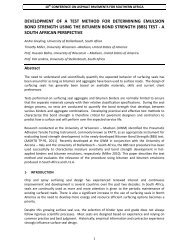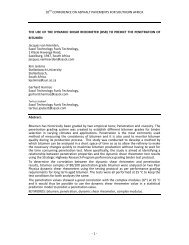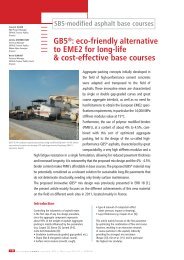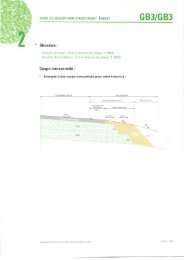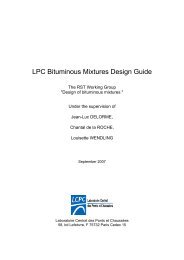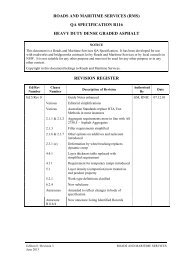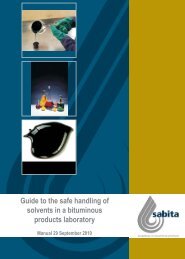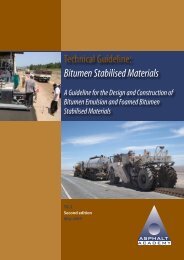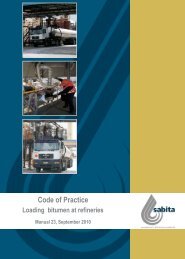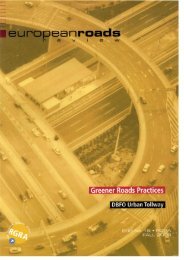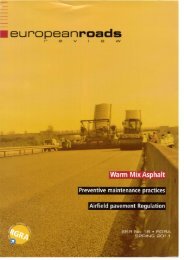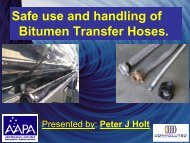You also want an ePaper? Increase the reach of your titles
YUMPU automatically turns print PDFs into web optimized ePapers that Google loves.
6. Improving Pavement Performance <strong>AAPA</strong> <strong>2011</strong> <strong>Study</strong> <strong>Tour</strong> Group ReportDraft guidelines and specifications are expected once the validation process in complete.The introduction of HiMA asphalt will also reinforce the concept of perpetual pavements allowingfor even thinner pavements to be produced which do not exceed their crack initiation strains atthe bottom of the layer.Observations during the HiMA site visit and during discussion with eThekwini / Durban staff:• HiMA is achieving up to 14000 MPa modulus• The potential benefits of high rut resistance whilst maintaining good fatigue resistanceis being confirmed in the test implementation – previous mixes all rutted quickly• The design process is different and interesting – Denneman, Transfer of High ModulusAsphalt Technology to South Africa Figure 1Ultra Thin Concrete SurfacingUTCS used at the toll plaza to address fuel spill damage and slow moving heavy vehiclesUltra thin concrete is a thin (60mm) layer of very strong (up to 100MPa compressive strength)concrete continuously reinforced with mesh and fibre, capable of handling large deflections andload repetitions. A number of APT tests have been conducted and a few test sections have beenconstructed that are now subject to LTPP evaluation. The technique is well suited to the SouthAfrican conditions as it is constructed using labour based methods.Foam bitumen and Bitumen Emulsion treated materialsOngoing research to validate the damage models and resilient response models of the material.These are all included in the “Godzilla” project.Research (Dave Collings, Long-term behavior of bitumen stabilised materials) into the long termbehaviour of Bitumen Stabilised Materials, particularly material with net bitumen contents of lessthan 3%, indicates that the primary mode of failure, over the long term, is deformation similar tothat of unbound materials rather than fatigue as previously assumed. Currently in South Africa,these materials are being modelled in two stage behaviour model, fatigue (pre-cracked) and post-V4-2 Page 73



